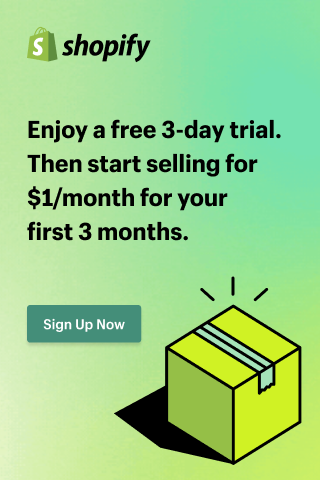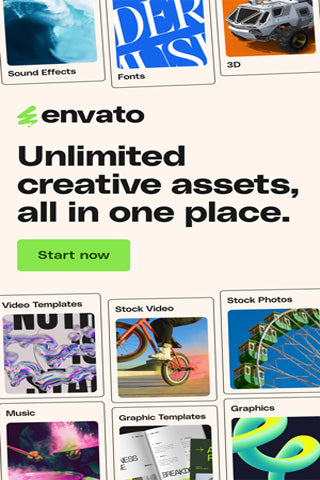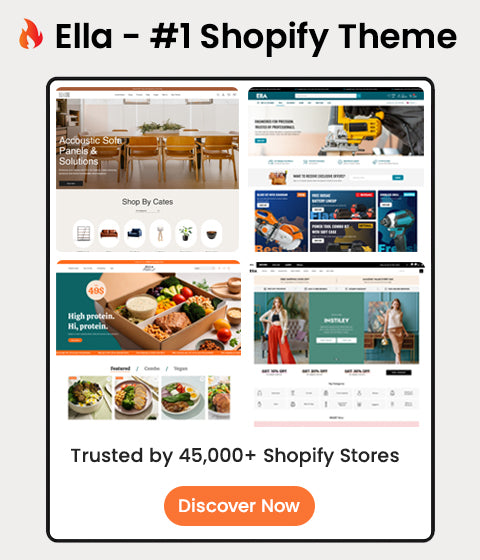How to Sell Art Online- The Ultimate Guide

Let's talk about the artist's biggest fear.
No, not the blank page. It’s the fear of putting a price tag on your work and saying, "This is for sale." The fear of being called a "sellout." The fear that business will taint your creativity.
It's a romantic, tired cliche. And it's a lie.
The "starving artist" myth is dead. The internet killed it. The most successful artists in history were always smart entrepreneurs. And in 2026, you have the most powerful tool the old masters never did.
Selling your art online isn't "selling out." It’s taking back control. You’re building your own gallery, where you set the rules and you keep 100% of the profit (not 50% to some curator).
This guide will show you how to do it, step by step.
The Big Decision: What Are You Actually Selling?
"Art" is a broad term. To be a business, you need a product. There are three (plus one) main models to choose from.
1. The Originals (The "Haute Couture")
This is the "real deal": the original oil painting, the sculpture, the one-of-a-kind drawing.
-
Pros: Highest value, 100% unique, high-end feel, direct connection to the collector.
-
Cons: Sells only ONCE. Difficult to price. And frankly, terrifying to ship.
-
Best for: Established artists or those building a high-end, exclusive brand.
2. Prints (The "Ready-to-Wear")
These are high-quality reproductions (giclée prints, art prints) of your original work. This is where you start to scale.
-
Pros: Create it once, sell it 1,000 times. Easy to ship (rolled in a tube). Creates an "accessible" price point for fans who can't afford the original.
-
Cons: Lower profit per item. Requires an upfront investment in printing (unless...).
3. Merchandise (The "Diffusion Line")
This is where Print-on-Demand (POD) comes in. This is, essentially, dropshipping for artists. You upload your designs to a service like Printful or Printify, and they print them on t-shirts, mugs, phone cases, and tote bags, shipping them for you.
-
Pros: Zero risk. No inventory, no upfront cost. It's marketing and a product in one.
-
Cons: The lowest profit margins. You don't control the final print quality (always order samples!).
-
Link: If you're selling shirts, you need a good theme.
4. Digital Products
These are downloadable .JPEG or .PNG files. The customer prints it themselves.
-
Pros: 100% profit. No shipping. No inventory. Sells infinitely.
-
Cons: Easily pirated. Lower perceived value.

My advice? Don’t choose one. Do them all. Offer the Original ($$$$), the Print ($$$), and the Merch ($$). This creates a "ladder of value," allowing fans at every budget to own a piece of you.
The Biggest Nightmare: Pricing Your Art
This is where 90% of artists get stuck. "What is it worth?" We get paralyzed, afraid of being called "greedy" or being "undervalued."
Let's take the emotion out of it.
Part 1: The Cold Formula (For Originals)

-
Your Time: DO NOT WORK FOR FREE. Decide on an hourly wage ($25/hr? $50/hr?) and stick to it. If a painting takes 10 hours and you're $30/hr, that's $300 in time.
-
Why x2 (twice)? The first x2 is your profit. The second x2 gives you "room" for galleries, discounts, or marketing costs.
Part 2: The Psychological Value (The Advanced Part)
Don't price based on your insecurity. Price based on value.
A painting isn't just canvas and paint. What is it?
-
Does it light up an entire room? (Decorative value)
-
Does it make the viewer feel calm? (Emotional value)
-
Is it a conversation starter? (Social value)
Once you understand you're selling value, it's much easier to put a $1,000 price tag on it than if you just think "this is $50 of paint."
Step 3: Build Your "Gallery" (Not a Rented Stall)
You can sell on marketplaces like Etsy or Saatchi Art. They're fine for discovery (like an art fair). But you'll pay 20-50% in commissions and you're competing with thousands of other artists right next to you. You'll never build your own brand there.
A Shopify store is your asset. It's your own gallery. You control everything. You own 100% of the customer list. You keep 100% of the profit (minus transaction fees).
Special Offer: Click here to sign up for Shopify and get a trial for only $1/month for your first 3 months.
Building your store isn't scary:
-
Get Set Up: Follow our step-by-step guide.
-
Get Paid: So you can, you know, make money.
-
Get Apps: You'll want a POD app (like Printful) and a review app.
Step 4: Photographing Your Art (The Hard Truth)
Let's be blunt: Online, you are not selling art. You are selling a photo of your art.
If your photo is dark, blurry, has a glare, or is at a weird angle, no one will buy it. You're selling a premium item; it must look premium.
-
Light is King: Natural, indirect light is best. Put your art near a large window on an overcast day (diffused light). Never shoot under a yellow indoor light.
-
Color Accuracy: Make sure the white on screen is actually white.
-
Detail & Context: Take a full-frame shot. Take a close-up shot to show the paint texture. Take a "lifestyle" shot to show what it looks like hanging over a couch.
-
Speed: After you shoot, compress your images so your store loads fast. A slow store kills sales.

Step 5: Choosing the Right Theme
Art needs "white space." It needs to breathe.
This isn't Amazon. Your store shouldn't be cluttered with pop-ups and flashing banners. It needs to be clean, minimal, and elegant. The User Experience (UX) must be smooth.
Top Theme Picks for Artists:
-
For Wall Art:
-
For Minimalist Elegance: (A beauty theme actually works perfectly for art because it's so clean)
Step 6: Shipping (The "Please Don't Break" Panic)
Shipping a $1,000 original painting is a heart-stopping experience. This is not the time to be "cheap." Preparation is key.
-
For Prints: Easy. Roll them and ship them in a heavy-duty cardboard tube.
-
For Originals (Canvas/Framed): You need to "over-pack" it.
-
Wrap in Glassine paper (acid-free). Never let bubble wrap touch the painted surface directly; it can stick.
-
Add cardboard corner protectors.
-
Wrap in multiple layers of bubble wrap.
-
Create a "sandwich" with double-ply cardboard or foam-core on both sides.
-
Place it in a snug-fitting shipping box, filling any gaps with packing.
-
ALWAYS buy shipping insurance! Factor this cost into your price.

For detailed guides, check external resources like this UPS Guide to Shipping Art.
Step 7: Marketing Your Art (Finding Your Tribe)
You don’t need to sell to everyone. You just need to sell to your people (your tribe).
And since art is visual, where should you be? On visual platforms.
-
The Golden Rule: Don't just post the Product. Post the Process.
-
Instagram & TikTok: This is your stage. Post time-lapse videos of you painting. Show you mixing colors. Tell the story behind the piece. Show your paint-stained hands. People buy the "story" and the "artist" as much as they buy the "product."
-
Email List (The Most Important): Instagram can crash. TikTok can get banned. The algorithm can change. Your email list is the asset you own. Offer a free digital print or 10% off the first order in exchange for an email. This is your VIP list. These are your future collectors.
-
SEO: When someone searches "abstract oil painting for living room," do you want them to find you?
Conclusion
The "starving artist" myth is kept alive by people too scared to build a website.
Your talent deserves to be seen. Your work deserves a beautiful home. And you deserve to be paid for it. Art is a real job. Start treating it like one.
FAQs (Frequently Asked Questions)
1. Should I choose Shopify or Etsy?
Think of it this way: Etsy is a stall in a crowded flea market. You get traffic, but you're competing with thousands and you're paying them fees. Shopify is your own private gallery. You own it, you set the rules. Pro Tip: Use both. Use Etsy for discovery to find new customers, then drive them to your Shopify store to build a long-term relationship.
2. What if no one buys anything?
Welcome to business. That's not a reflection of your talent; it's a reflection of your marketing. Are your photos bad? Is your price too high (or too low)? Are you promoting it to the right people? Test. Tweak. And keep creating.
3. Do I need an LLC to sell art?
(Disclaimer: I'm not a lawyer.) To start, you can sell as a "sole proprietor" (just you). Once you start making consistent income, forming an LLC (or your local equivalent) is a smart move to protect your personal assets. Talk to an accountant.











